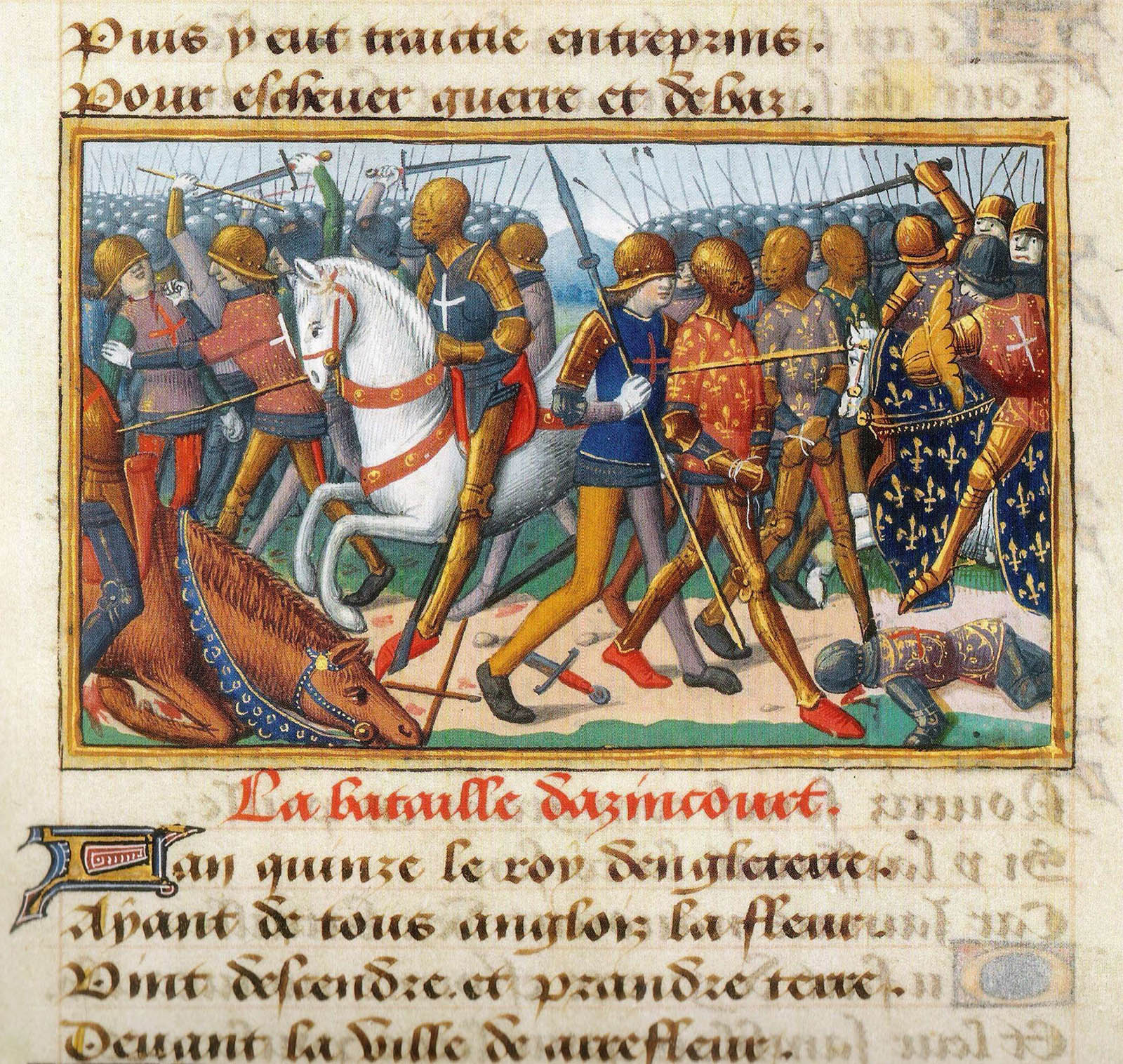
Painting of Italian armour on the medieval miniature. Battle of Agincourt, late XV century. Miniature is kept in the National Library of France, Paris.
Undoubtedly, the XV century is considered an epoch of plate armour, which had been mainly manufactured by armourers of the North Italy.
Up to the middle of the XIV century, Lombardy and Milan were the largest centers of making of high-quality knight gear. It may safely be said, basing on the Anglo-French and Italian manuscripts of these times. According to the data of famous Britain weaponologist Claude Blair, who referred to archival depository of Francesco Datini, armourers of the North Italy were actively exporting their products to all European countries as long ago as 1360 year. Moreover, popularity of these crafters allowed them staying at market until the XVI century and saving popularity of skilful artisans. Representatives of Milan family Missaglia gained the most popularity among the armourers of this handicraft. Strictly speaking, it conduced a fact, that typical plate kit of the XV century is called Milanese armour.
From the end of the XIV till the middle of the XV century, Milanese armour had fledging period, but in the second half of the XV century we can indicate final stage of its development. Since then, armourers canalized their energies for perfectibility of existing shapes of armour, base of which had been left almost unchanged.
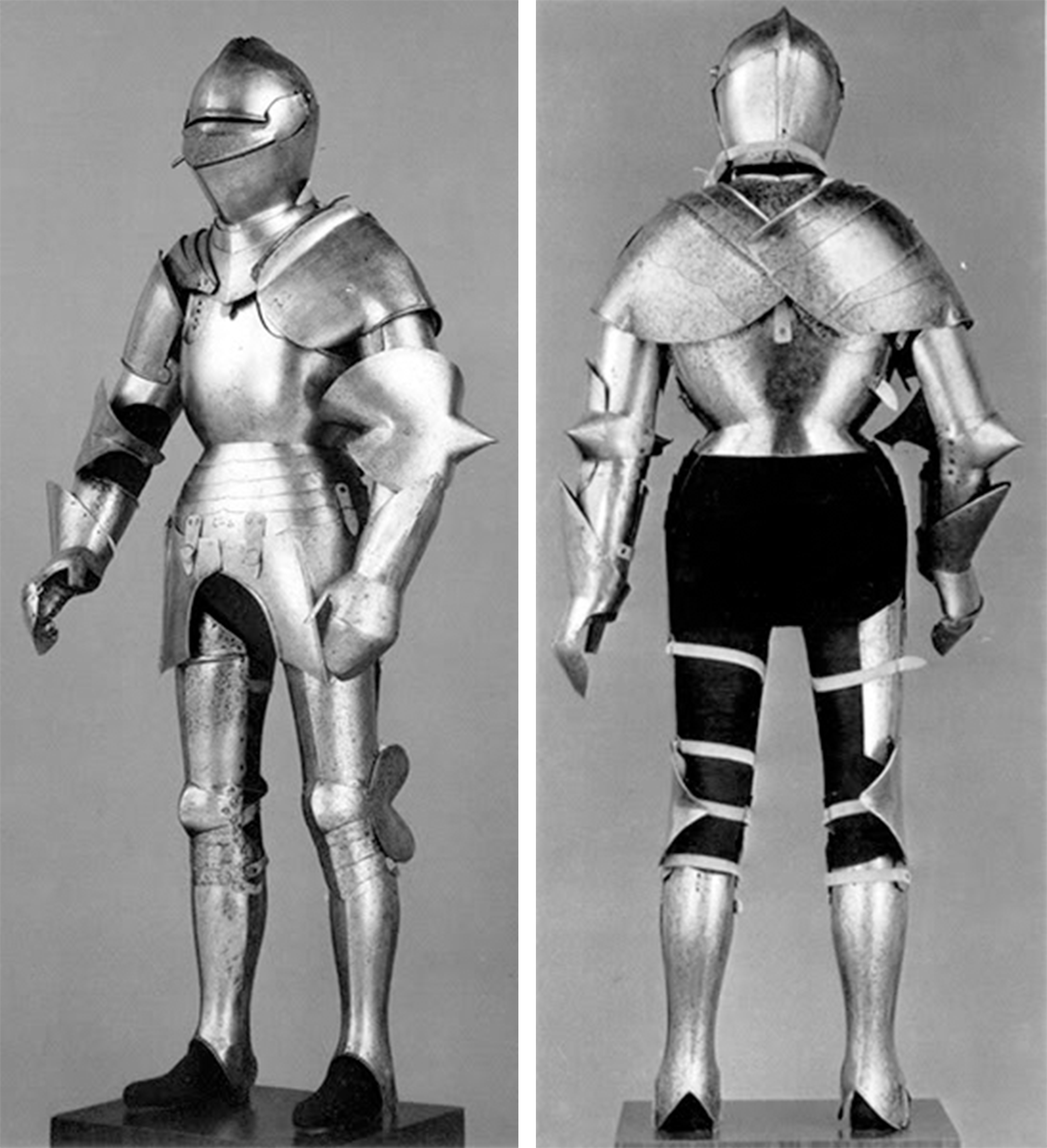
Milanese armour from Diocesan Museum (Chiesa Di Santa Maria Delle Grazie, Curtatone, Italy). Plate protection was made in Lombardy approximately in the 1460-1480 years.
A noteworthy detail is that it is considered to call Italian or Milanese body defense a full-plate homogeneous armour, which was covering almost all body surface of its owner with large steel plates. A distinctive feature of such armour was rounded shape of the main component parts: roundish cuirass, wide massive pauldrons, elbow caps, etc.
Cuirass
Let’s drill down main elements of Milanese armour.
Torso was protected with roundish cuirass. It consisted of few segments, which allowed rather free movability. Breastplate was covering the upper part of body. Usually, it was hammered of unitary sheet of metal. Quite often, there were installed a queue on the right side of breastplate. It allowed reliable fixation of a spear. Plackart (or placard), a piece of armour, which protected lower front part of torso, was attached to the breastplate with vertical leather belts. It had anatomical curve, which followed the shape of waist. Plate skirt of three or more overlapped segments was fastened to plackart with rivets and leather support.
Backpiece of Milanese armour has the same structure as the front part of cuirass. It consists of large waist-length upper plate, an upper plate, which covers low-back and metal skirt – culet. Blacksmiths often turned edges of the main plates up. Besides, neck part of breastplate could be protected not only with metal brim, but guarding V-shaped ribs as well.
Milan-style cuirass did not undergo radical changes during all the XV century. All improvements were aimed to raise its’ ergonomical characteristics during the wearing, reliability and protective features as consequence. Plate skirt was one of most changeable element of cuirass. Round the 1420 year, Italian-style skirt had small archlike cutout on the bottom plate in the groin area. This is proved by picture of Milanese armour in the famous “Bedford Hours”. We can see it on the illustration of legend about King Clovis I, where His Majesty is pictured in plate armour with similar arch on the skirt’s bottom.
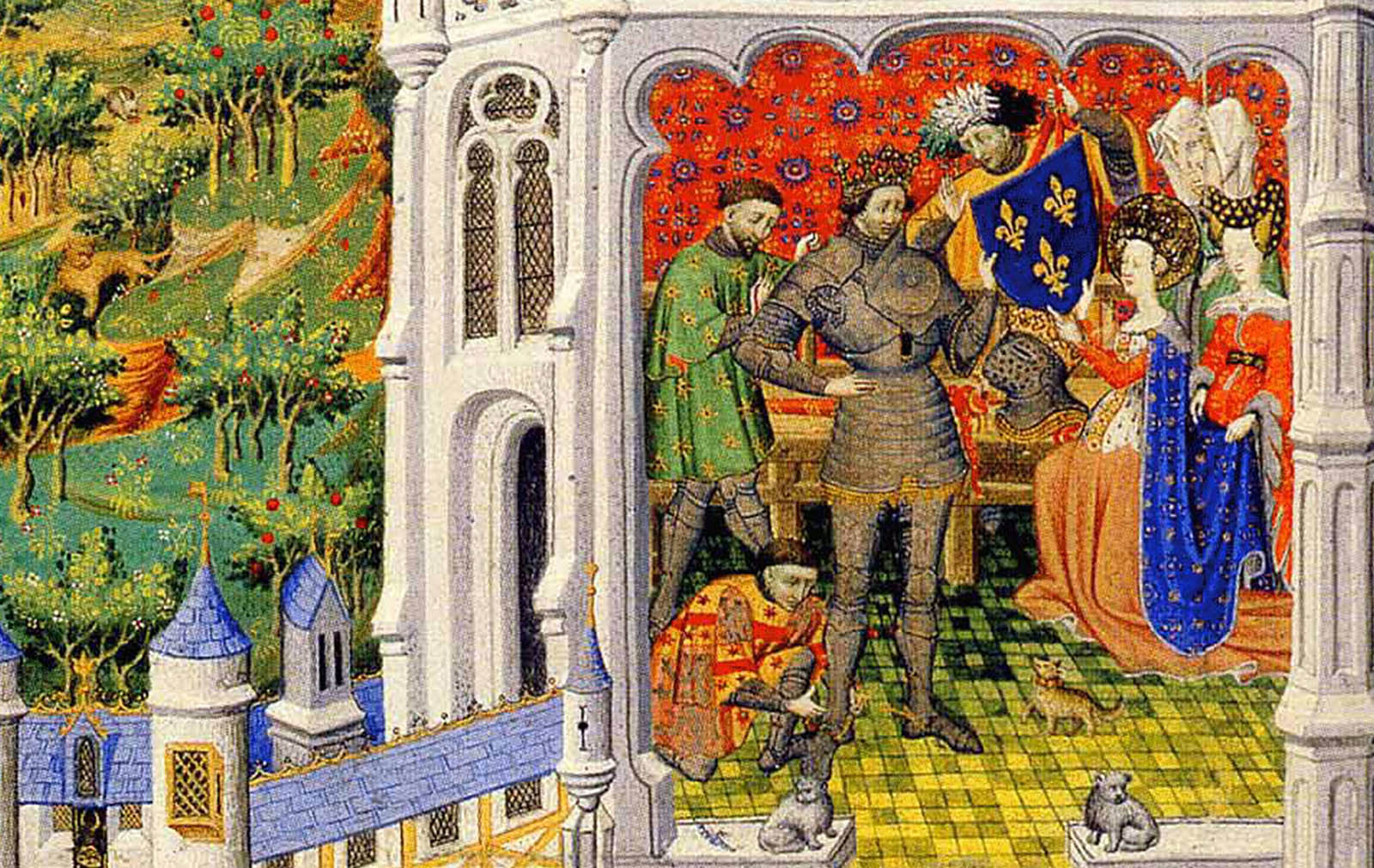
Fragment from the “Bedford Hours”, picturing legend about King Clovis I, who accepts fleur-de-lis.
About 1430 years, this archlike cutout enlarges so much so it divides plate skirt on two halves, which take the form of square plates – tassets. They were fastened to the bottom edge of plate with belts and were hanging down in such a way, that covered upper part of leg. One long plate often complemented tassets and covered bottom part of culet. According to the English register of the 1439 year, these plates were called “foretasses” (for the front plates) and “hindtasse” (for the back plates).
Besides, now they have only one name – tassets. It is worth mentioning that this element is one of the typical feature of Milanese armour. Little by little, tassets become longer and their shape is constantly being changed. To the second half of the XV century, they gain triangle shape, that came down to the start of the next century. Also worth noting is that plate skirt had started to be supplied with additional smaller tassets on the sides approximately from the early 1440 years. Changing of big aback tassets to the smaller analogues was usual thing these times.
Starting the first quarter of the XV century, breastplate, upper backpiece and waist plate, skirt and culet had being connected with hinges on the left side of cuirass more often. There were belts with buckles on the right side, which allowed safe “closing” of armour on the knight’s torso. Such type of attachment we can see on the cuirass from the kit of Frederick I the Victorious (der Siegreiche, Pfalzgraf and Kurfürst von der Pfalz).
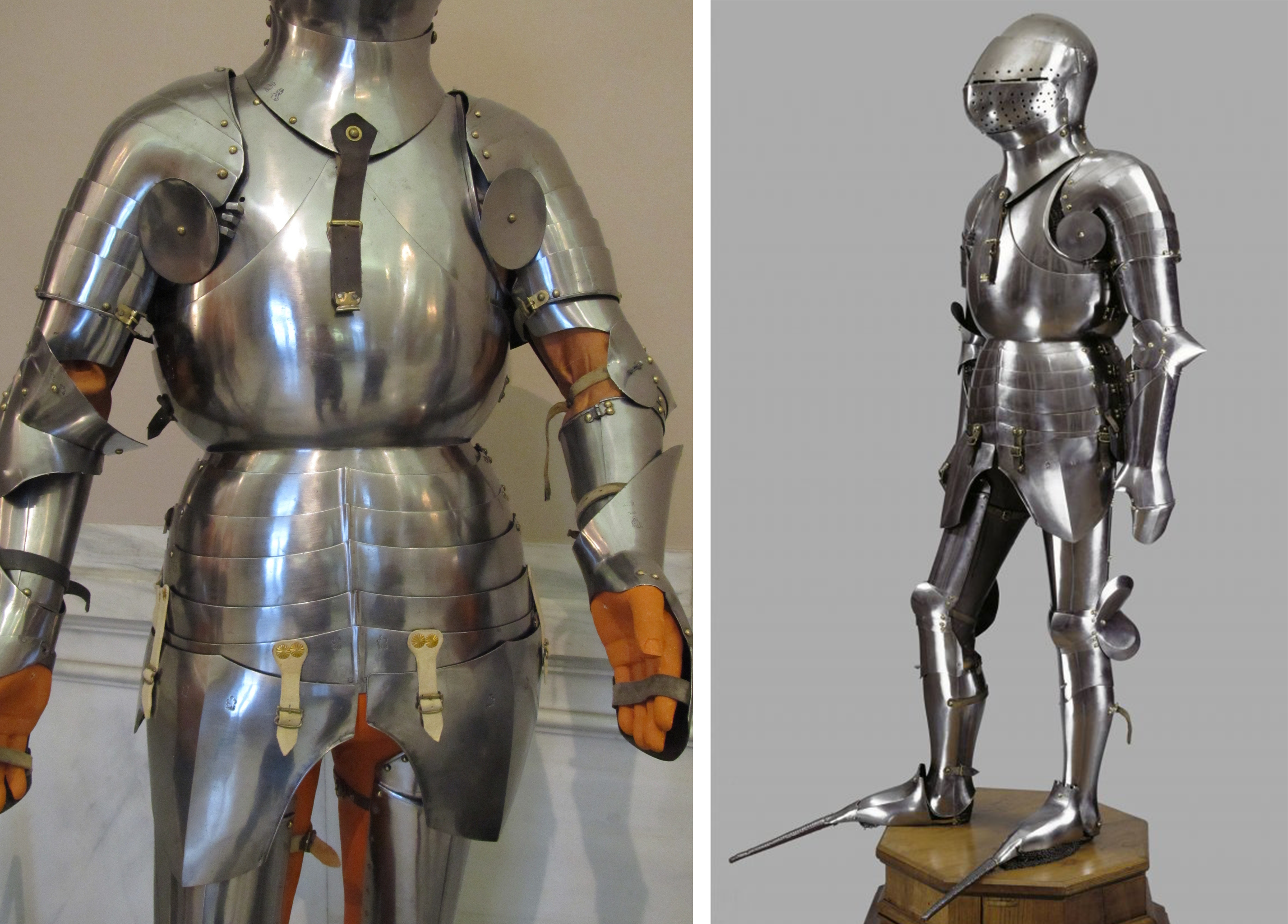
Armour of Frederick I was made in about 1450 year by Milanese crafters of Missaglia family. Now this kit is kept in collection of Kunsthistorisches Museum Wien, Austria.
In the middle of the XV century, armourers started to place top part of placard and waist plate upwards. It caused change from three vertical belts (which were holding plackart and breastplate, backpiece and waist plate connected) to only one belt, that was fixed in the middle. In addition, despite of the doubtless popularity of such type of attachment of plackart and breastplate as with one belt, we should notice, that there had being existed armour with few belts. For example, there is a breastplate from full-plate kit of Ferdinand II of Aragon. Armour was manufactured approximately in the early XVI century. Most probably, there was a work of Spanish armourers.
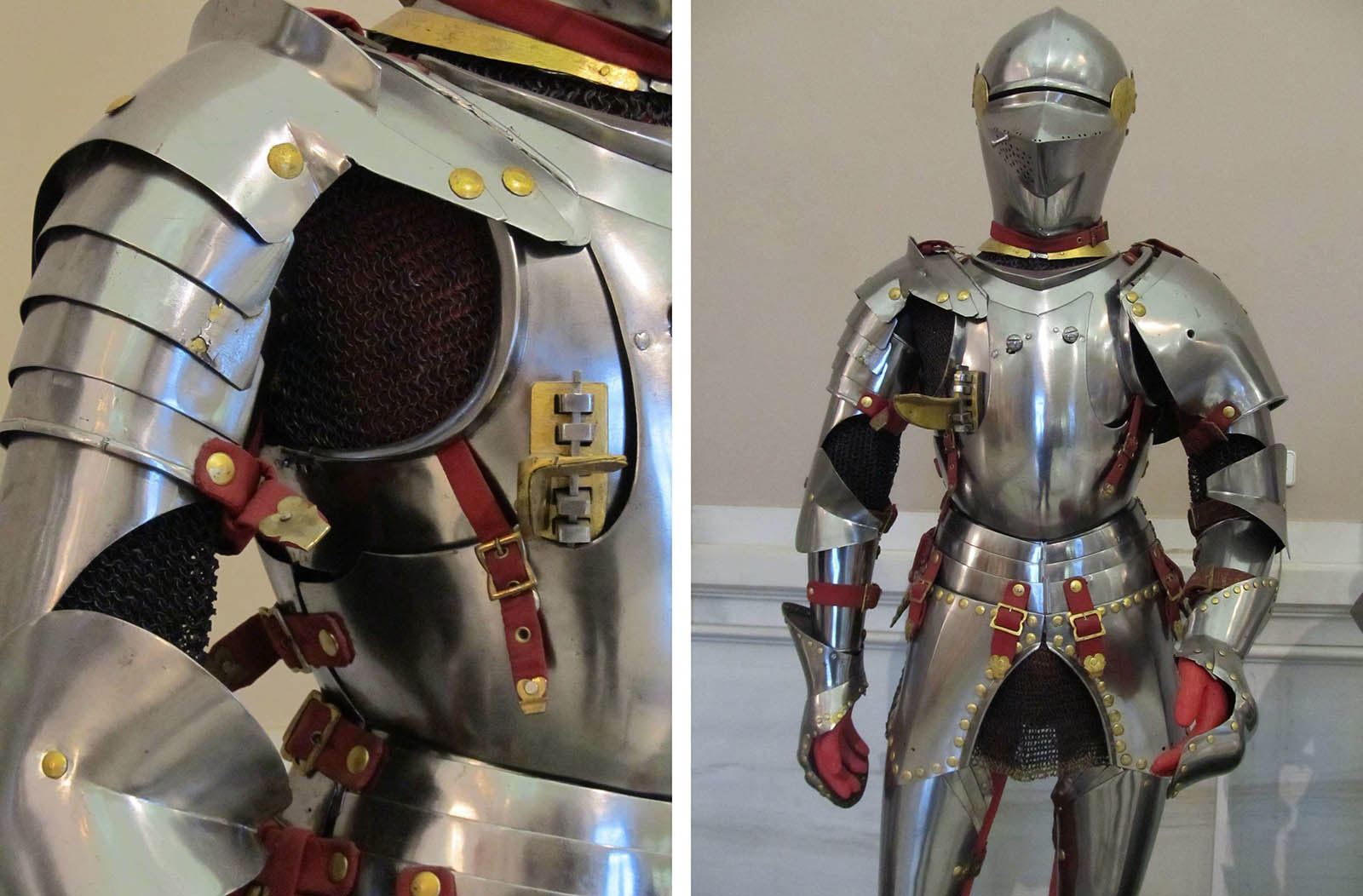
Plate armour of Ferdinand II of Aragon (the Catholic) was made in about 1500 year, probably in Spain. Kit is a part of collection of Kunsthistorisches Museum Wien, Austria.
External view of Milanese cuirass suffers changes over time as well. Thus, around the 1440 years, middle part of placard and waist plate became more fragmentary – few metal plates had being used for making. Such development of common design of Italian armour was giving to owner better dexterity, than cuirasses with less quantity of movable elements. Movability had being achieved due to a great number of horizontal metal strips, which were riveted to each other.
As well as on the plate skirt, these strips were overlapped from the bottom upwards. Every strip had curved lofting extrusion. The later models of Italian armour had this extrusion of more prolate from, and in the middle of the XV century, it was reaching a neckline. Plackart is being expanded and covered the upper breastplate more and more. To the 1490 year, some armour included a plackart, that completely closes breastplate. The only exception was a cut near by the right arm, where queue had been placed.
We should notice, that fullmetal roundish cuirass got back to active usage. It had plate skirt, which was attached directly to the breast part. Sometimes, cuirass had such additional protection as dismountable placard or reinforcing breastplate.
Spaulders
One of the striking feature of Milanese armour is asymmetry of spaulders. Left shoulder protector often had outside look, in comparison with right one. Reinforcing of protection of left shoulder was explained with a simple fact, that enemy’s tilt felt at the left side during the tournament. Spaulders with large borders were fencing blow of spear off.
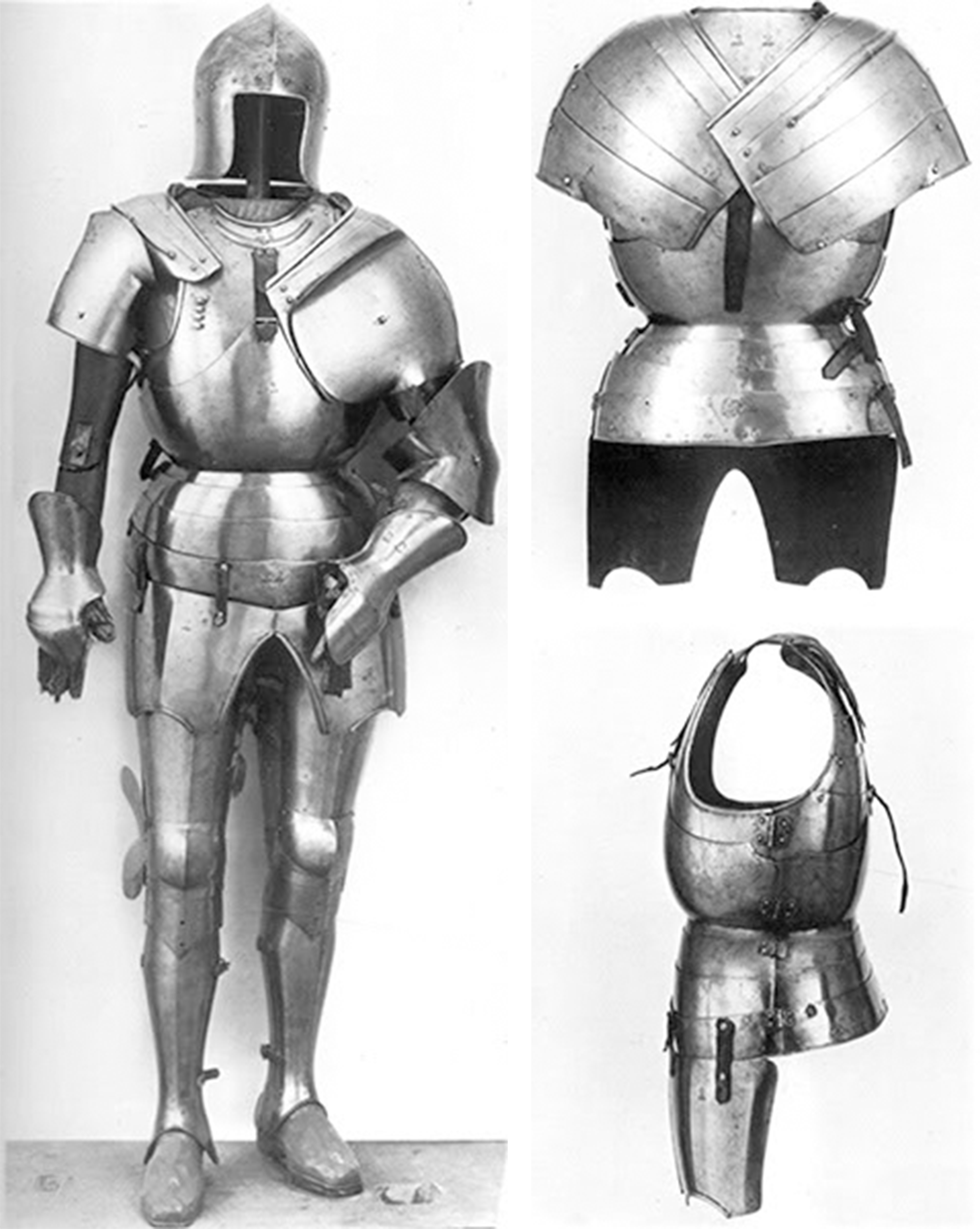
Armour of Count Galeazzo D’Arco. Work of armourer Tommaso Negroni (Missaglia), Milan, 1450 year (collection from Churburg Castle). Backside view of spaulders and side view of cuirass with tassets, also part of this armour.
Asymmetrical pauldrons were very popular during the XV century. Every shoulder protector consisted of few segments (4 and more), which were connected with moving rivets. In time, edges started to become rounded. Back edges expanded so much so wide plates were laying overlapped on the back of knight.
Besides, to the end of century, a tendency to overlap back parts of spaulders called off. Approximately from the 1490 years, back edges had being cut in such a manner, that they were not overlapping nearby spaulders anymore. Nevertheless, size of pauldrons had not reduced to this time. They were still massive and grotesque detail of Italian armour.
Front side of spaulders was staying unchangeable during a century. But truly speaking, there were slight additions. Thus, approximately from the 20-s of the XV century, left pauldron is often reinforced with big round or square plate. Square-shaped plates had sharp brows, and paint often covered it. Motto of owner could be written on it.
Analyzing works of art of the XV century, we may arrive at conclusion that round reinforcement plate on the left pauldron was in wide use until the 1445 year. But, to the end of the 1430 years, roundish shape started to give way to a protection plate, which was following the shape of a spaulders. It covers front side of pauldron three-quarter from the bottom. Similar, but smaller plate had being attached with staple and pin on the front part of the right spaulders. Both, left and right plates were often reinforced with guarding ribs, which were following diagonally from the upper edge of haute-pieces.
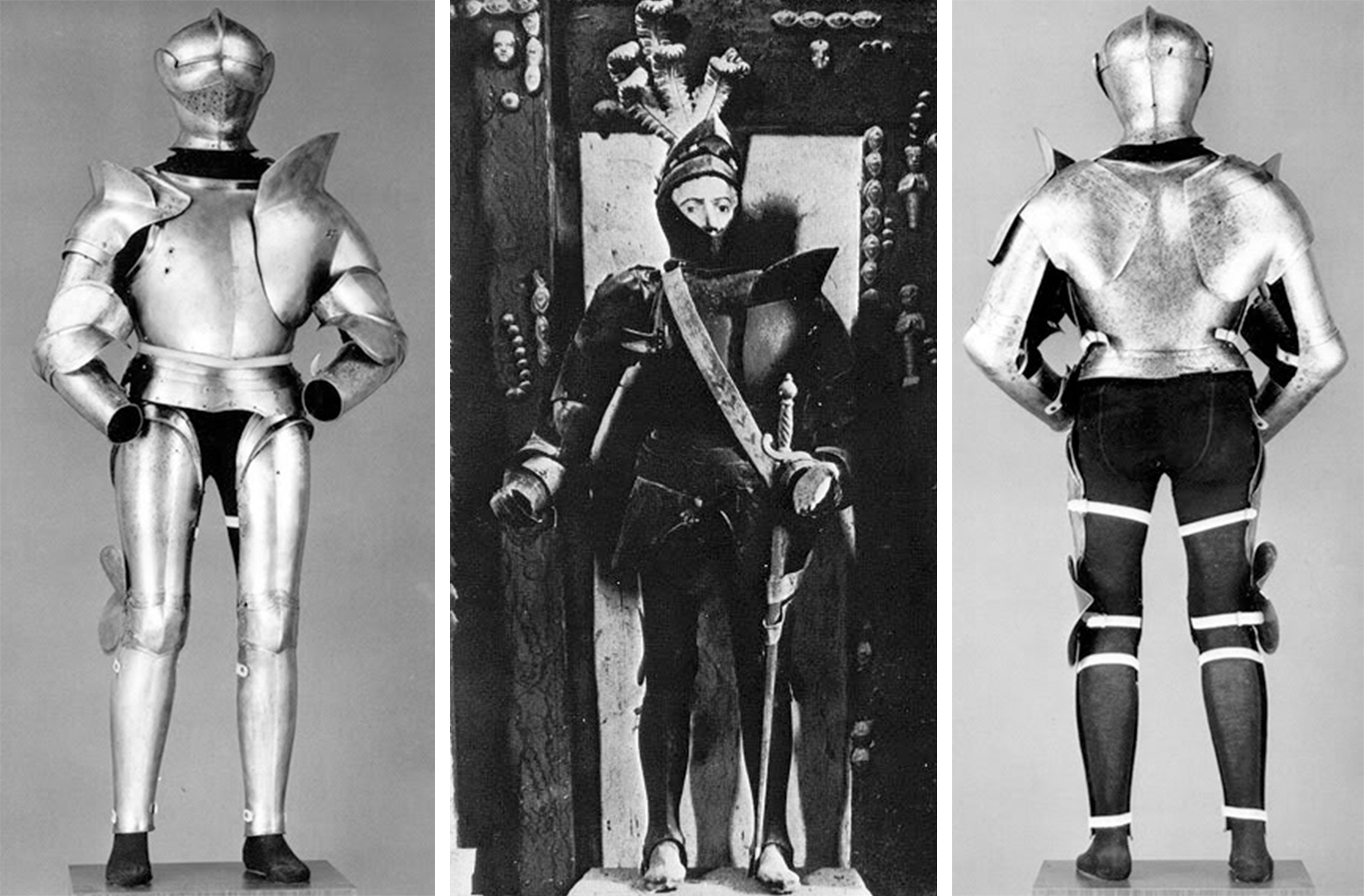
Funeral statue in plate armour, church of Santa Maria delle Grazie in Mantova Armatura Lombarda (middle photo).
Milanese armour from Diocesan Museum (Chiesa Di Santa Maria Delle Grazie, Curtatone, Italy) with similar pauldron with high haute-pieces, Milan, 1510 year (right and left photos).
Approximately from the first quarter of the XV century, upper edges of spaulders started to become curved and shaped protective upstand (or so-called haute-pieces). Left upstand was significantly higher, than a right one. Perfect example is spaulders from church of Santa Maria Delle Grazie (which were founded on the funeral statue of knight in the XVI century). Statue is worn in Milanese armour, which was made in Missaglia workshop approximately in the 1500 year. Left pauldron of this armour has large reinforcement plate with massive vertical edge, which was reaching a chin of owner.
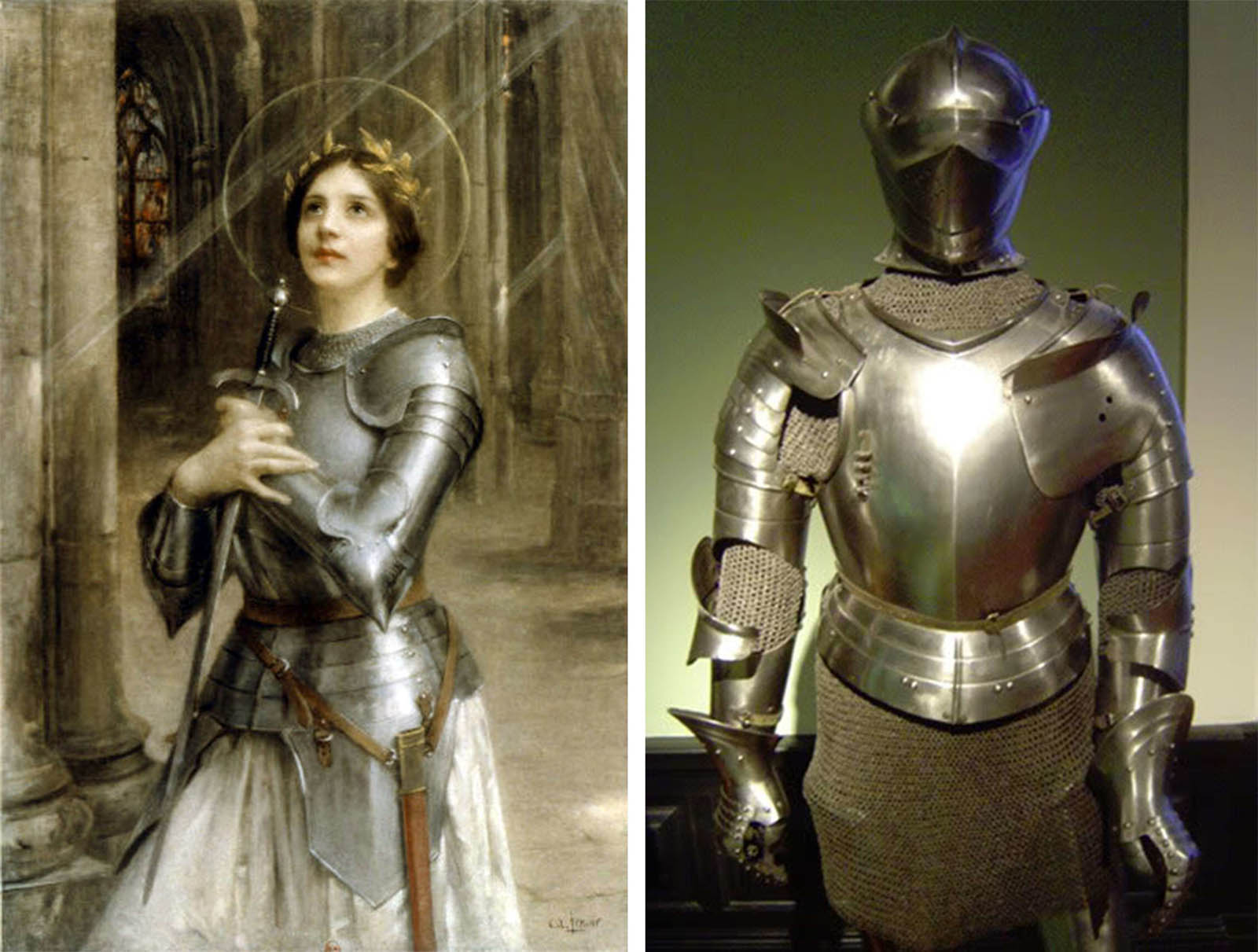
“Joan of Arc” by Charles-Amable Lenoir (left photo).
Italian armour of Giano II di Campofregoso, duke of Genoa, Milan (right photo).
Less expressed haute-piece is pictured on the painting “Joan of Arc” by Charles-Amable Lenoir or at the real model of Italian armour, which is similar to plate kit of the Maid of Orleans. Milanese crafters made this armour for Giano II di Campofregoso, duke of Genoa between 1505 and 1510 years. It is worth to notice, that such haute-pieces were made with a purpose of neck protection. As tilt, reflected by pauldron, felt exactly at this side.
Arm protection
Plate bracers were one of the element of Milanese armour that did not suffer specific changes during the XV century. Besides, Italian crafters made some slight adjustments in this part of body defense as well. Approximately to the 1430 year, halves of vambraces were almost completely bracing an arm. In the second part of century, they lose shape of tulip and guarding ribs, that had being attached to the bracers under the elbow cap.
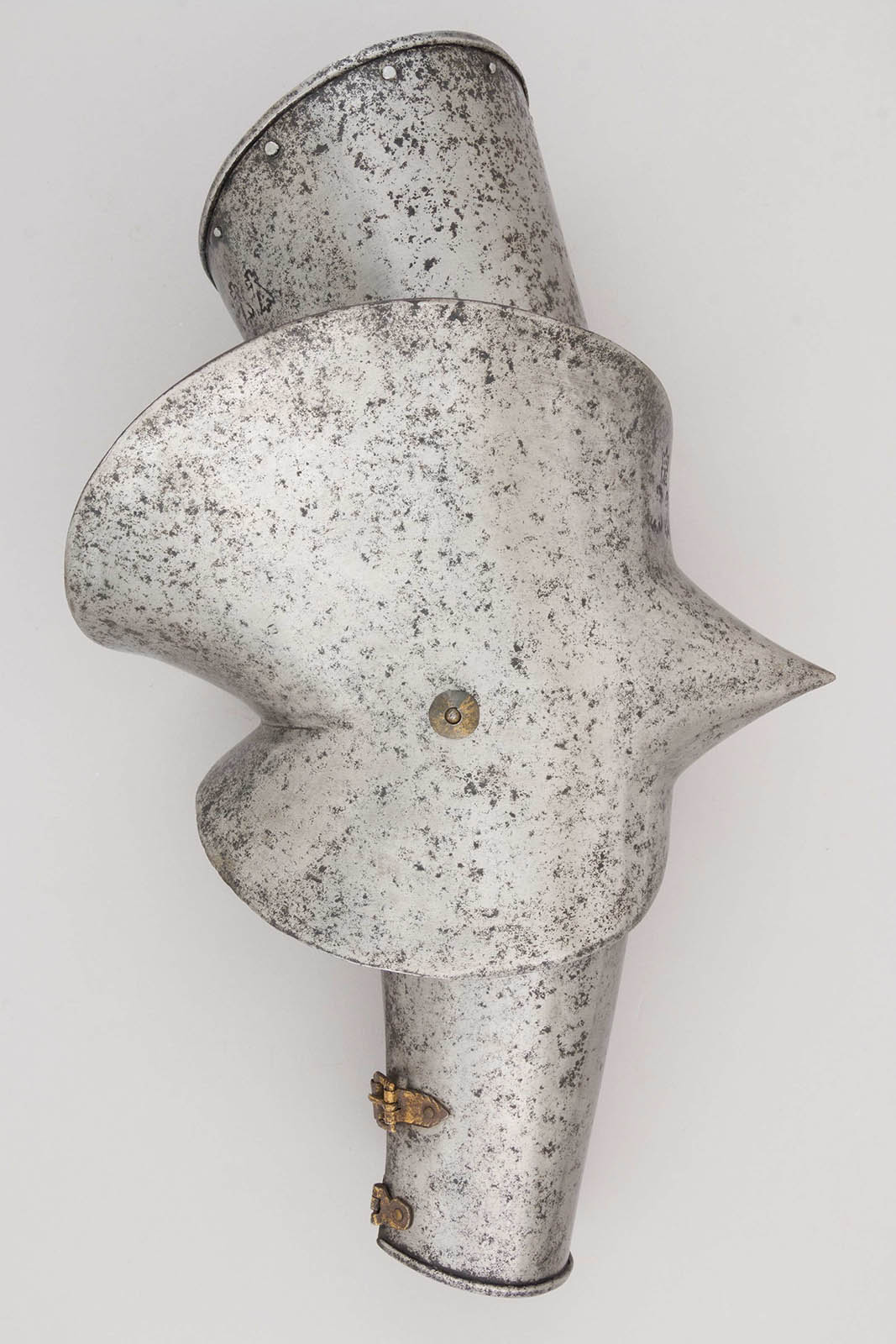
Elbow cap with protective plate for left arm. Italy, 1450-1460 years.
Elbow caps, which were completing asymmetrical Milan-style spaulders in aesthetic and practical matters, underwent the most changes, unlike the bracers. Thus, side wing (or fan) of the right elbow cap took V-shape and became to cover inner side of elbow (and sinews). Pass guard had reinforcement plate on the top.
Side fan of the left elbow guard increased slightly, in comparison with its front part. Reinforcing plate of the left cap had shell shape. This plate looked similar to the right one, but was larger. Additional protection had being attached to the elbow piece with staple and pin, like a plate of left pauldron. That plate was attached to the left arm only, except in very rare exceptions. Between the XV and XVI centuries, reinforcing plates on the elbow caps had being changed to symmetrical elbow-pieces, which had big shell-shaped plates for better protection of the joints. This part of armour often had reinforcement ribs from the outer edge of elbow to the inner side. As an example, there is above-mentioned armour from Church of Santa Maria delle Grazie in Mantova.
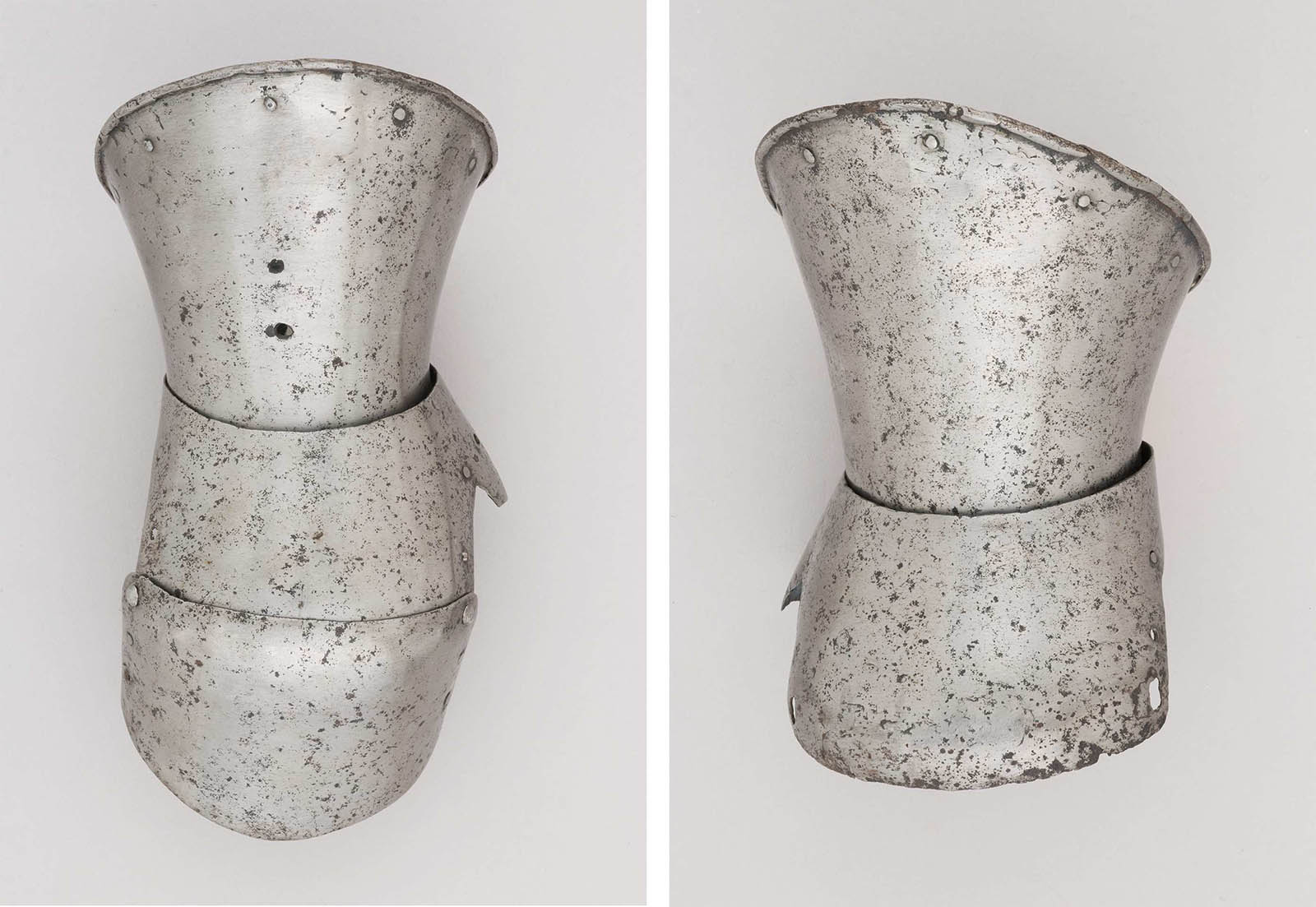
A pair of plate gauntlets from the Metropolitan Museum of Art (New York, USA). Italy, 1440-1450 years.
Plate gauntlets were another important element of Italian armour. Starting the 1430 year, hand defense with separate fingers changed into mittens. We can see an example on the armour from Diocesan Museum (Chiesa Di Santa Maria Delle Grazie, Curtatone). Also, at the painting “Brera Madonna” we can see similar, mittens, lying near of the knight.
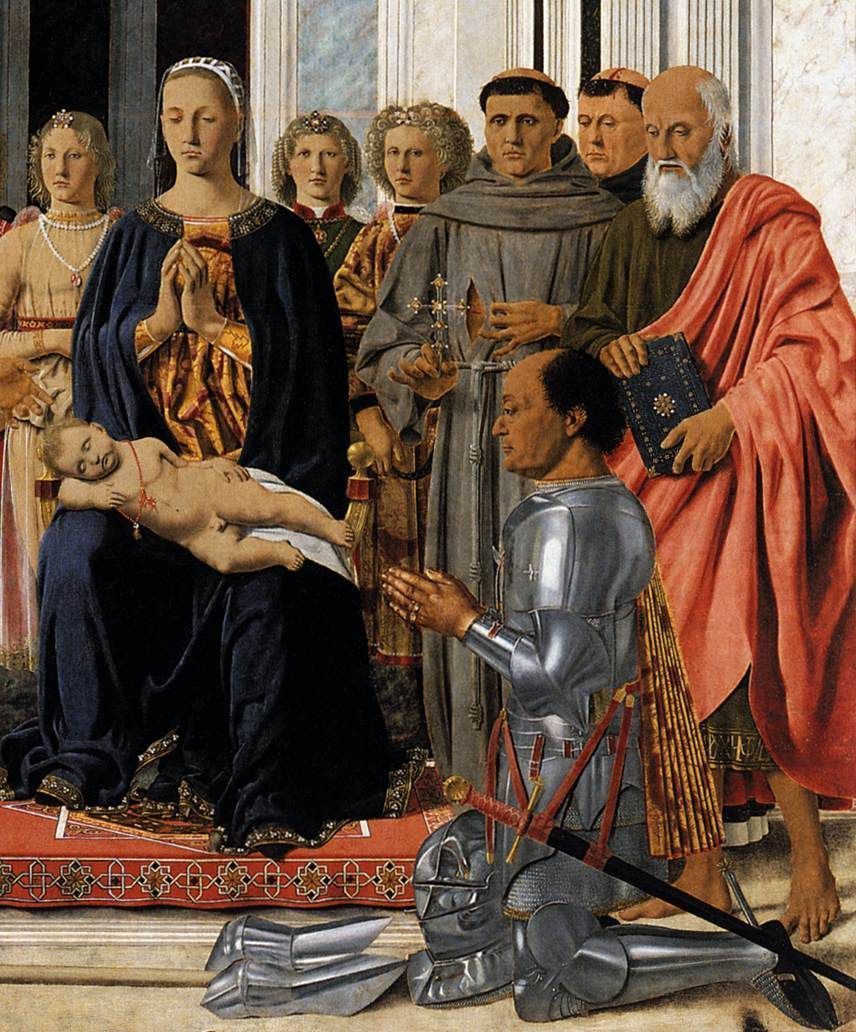
“Brera Madonna” (1470 year) by Piero della Francesca. Painting is a part of the Montefeltro Altarpiece and placed in Pinacoteca di Brera of Milan.
At this example, we can see typical feature of such gauntlets: wrist plates completely cover the fingers, and movability of every gauntlet depends on the hand. So, right mitten was often more movable and had three connections: one on the wrist and two above the fingers. Left mitten had only one connection - over the middle of fingers. It was caused by a fact, that knights were usually holding a weapon with right hand, which required more mobility, than left one. Wristbands of plate gauntlet started to cover forearm in time. Shape of back edge had changed from roundish one (in the first part of the XV century) to the pointed and leaf-shaped one (starting the 1440-1450 years). Extended edges of wristbands had being elongated so much, so they were reaching elbow caps. Fashion for such form were unchanged until the end of century.
Leg protection
Leg plate protection from Milanese armour is noted for good mobility and anatomical shape. During all the century, two or more hinged ledges were being presented on the inner side of the plate thigh plate. Plates, which were bracing a thigh, had being attached to them. Starting the 1430 year, segmented parts were added over the thigh part. They were covering a gap between bowed edge of main thigh plate and groin. Movable part had being usually attached with one narrow strip with rough edge. From the 70-s of the XV century, slightly raised upper edge in the middle of main plate of thigh defense had been developed. In time, top of cuisses gets shape that is more concave.
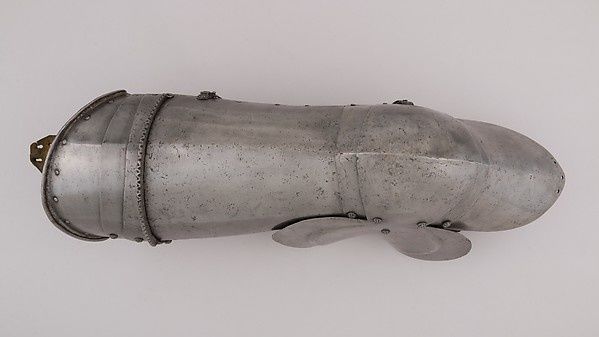
Thigh protection with knee cap. Italy, 1425-1450 year.
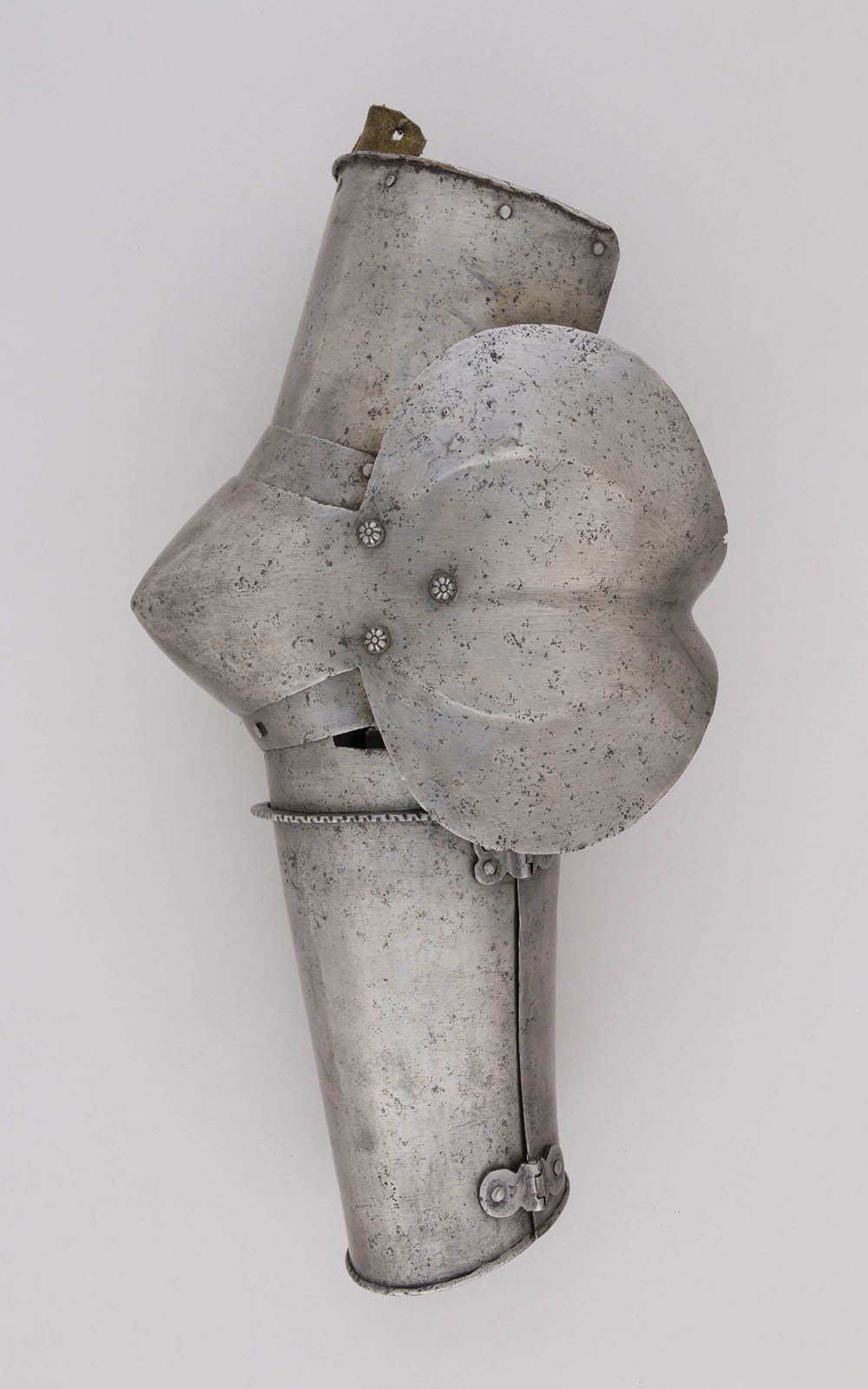
Side wing of knee cap. Italy, 1430-1440 years.
We should notice that metal pieces for thigh defense with wide lower plate, downgoing under the knee, were widespread in Italy in the XV century. Armourers were making such armour for using them without greaves.
Form the middle of the XV century, kneecaps with pointed lower strip came into fashion. At the same time, side fans enlarges significantly and gets convex form and not deep V-shaped “crease” in the center. Edges of knee-pieces were expanding and running back. Knee guards of such type were popular from the end of century and suffered just slight changes.
Besides, it is worth noting, that some works of pictorial art of these times show pictures of side wings, which encircle back side of knee joint. For example, there is a painting of Pisanello “Vision of the Madonna by Saint Anthony and Saint George”.
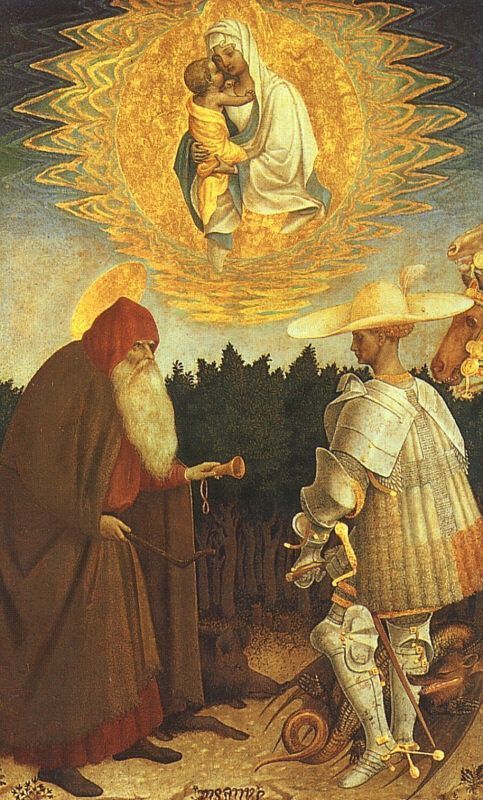
Example of knee cap, that encircles knee joint at the picture “Vision of the Madonna by Saint Anthony and Saint George” (1445 year) by Pisanello.
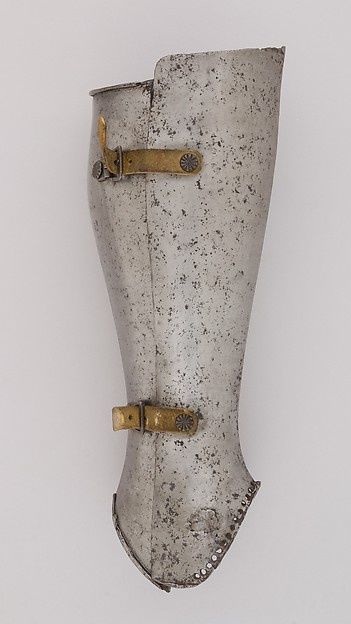
Plate greaves. Italy, middle of the XV century.
In contrast with upper leg protection, greaves remained almost unaltered during all the XV century. Calf protection had being worn separately. They were two-leaved, that allowed complete defense of calf all around. The single change in the greaves’ design was a straight bottom edge, instead of the curved extrusion over the ankles. Knights were wearing such greaves with mailed boots, and rarely - with pointed sabatons.
Head protection
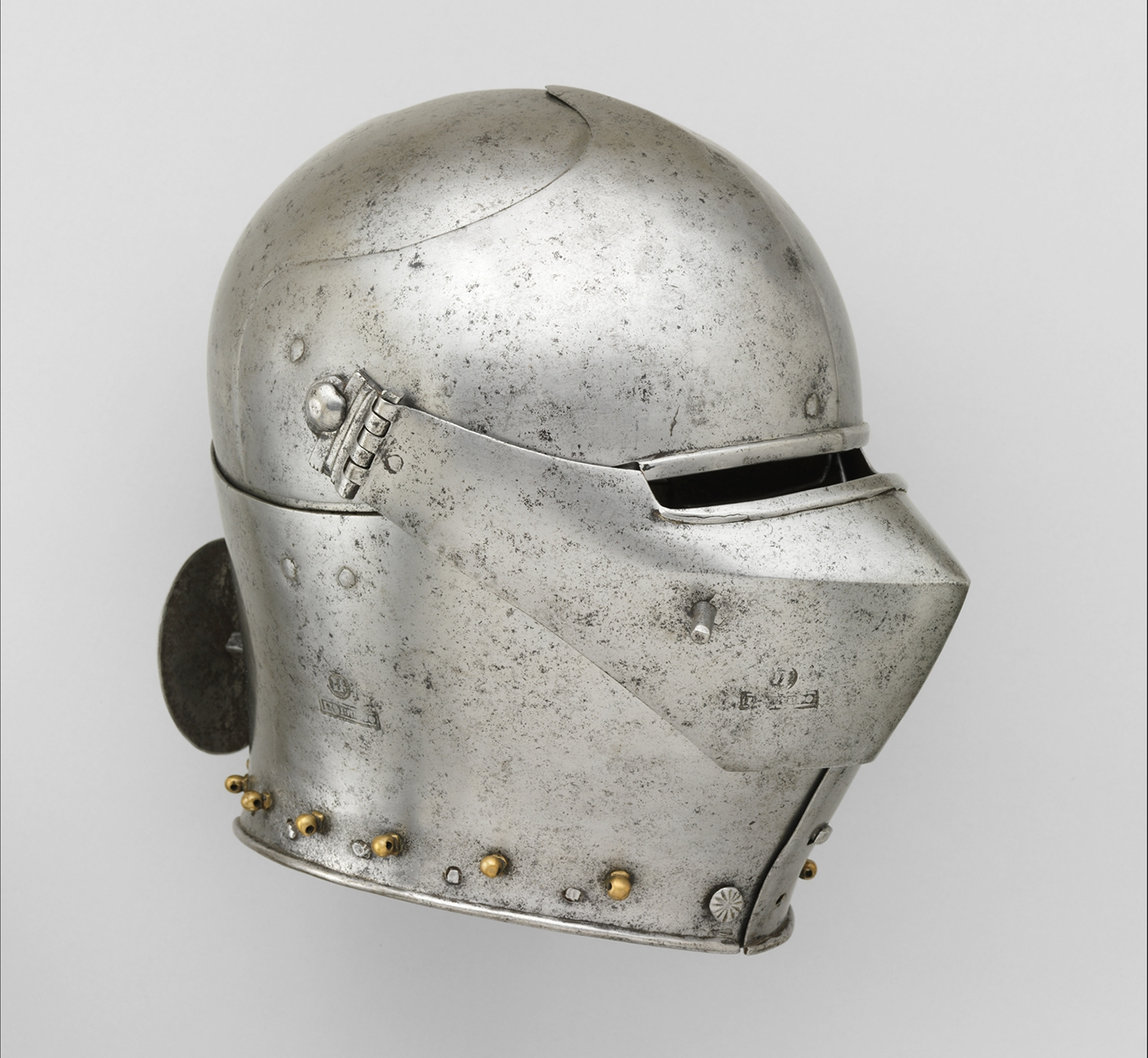
Helmet armet, made by Leonardo, 1440 year. Milan, Italy.
Helmet armet with cuneal visor was the most typical model for Milanese armour. Initially, such name had almost all helmets with dome of anatomical form (which was following the shape of owner’s head). In actual fact, every closed helmet of the XV century, which was differ from Grand bascinet and sallet, answers to that description. Weaponologists mark as “armet” a closed helmet with long cheek elements, that had being attached with hinges and joined together on the chin.
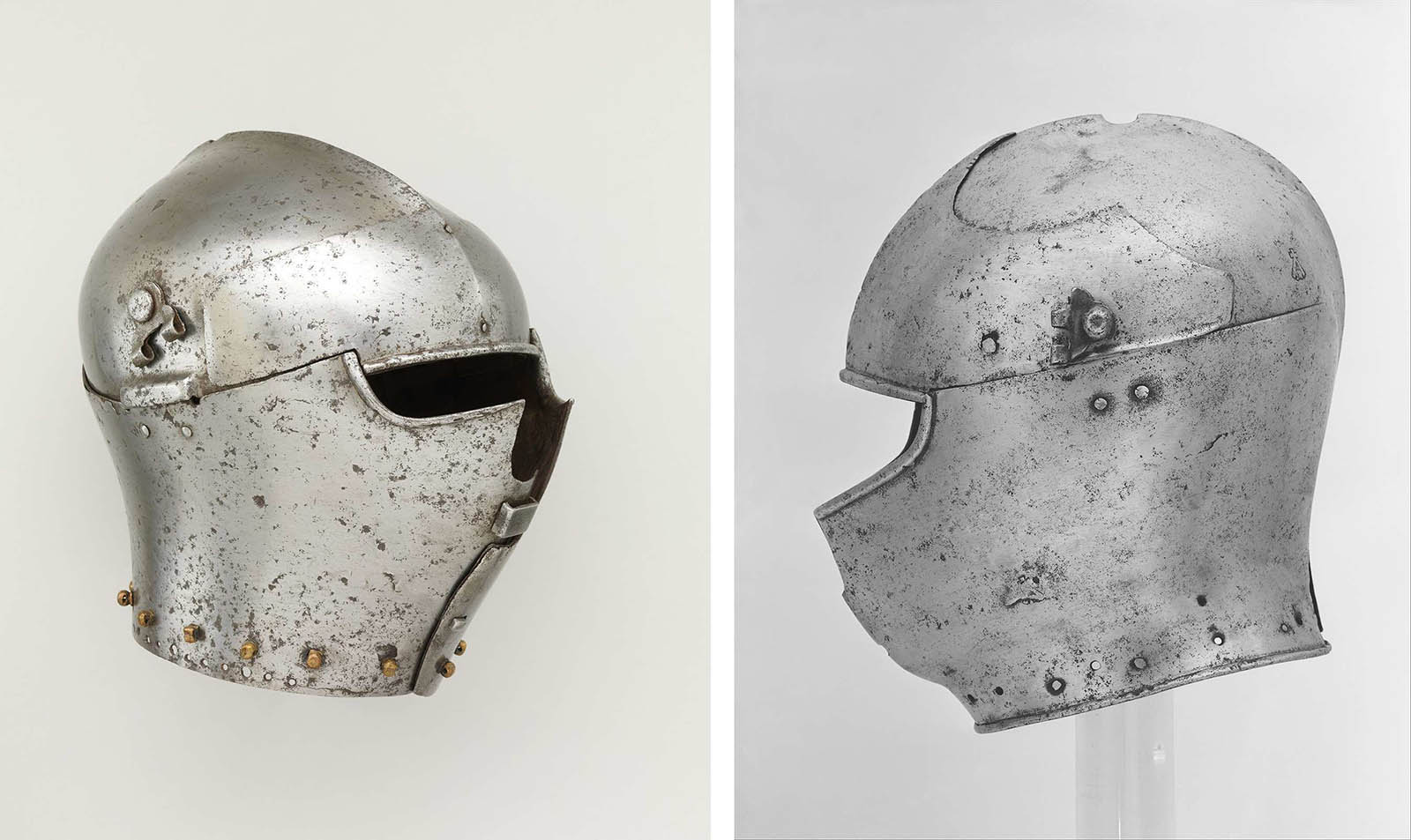
Helmet armet without visor, with cheek elements. Italy, 1430-1440 years (from the left).
Armet without visor. Milan, Italy (Missaglia armoury), 1460 year (from the right).
Such type of helmet was widespread in Italy and outside of it. Classic model of armet had a crown, which was made of one-piece of metal. Neck-flap of anatomical shape went down to the base of neck. Segments, which protected a chin, had being attached to the bottom edge of a crown. They were covering neck-flap from the back side and overlapping each other in the area of chin, where had pin connection. Thus, face hole had a look of inverted arch and left eyes, nose and cheeks uncovered.
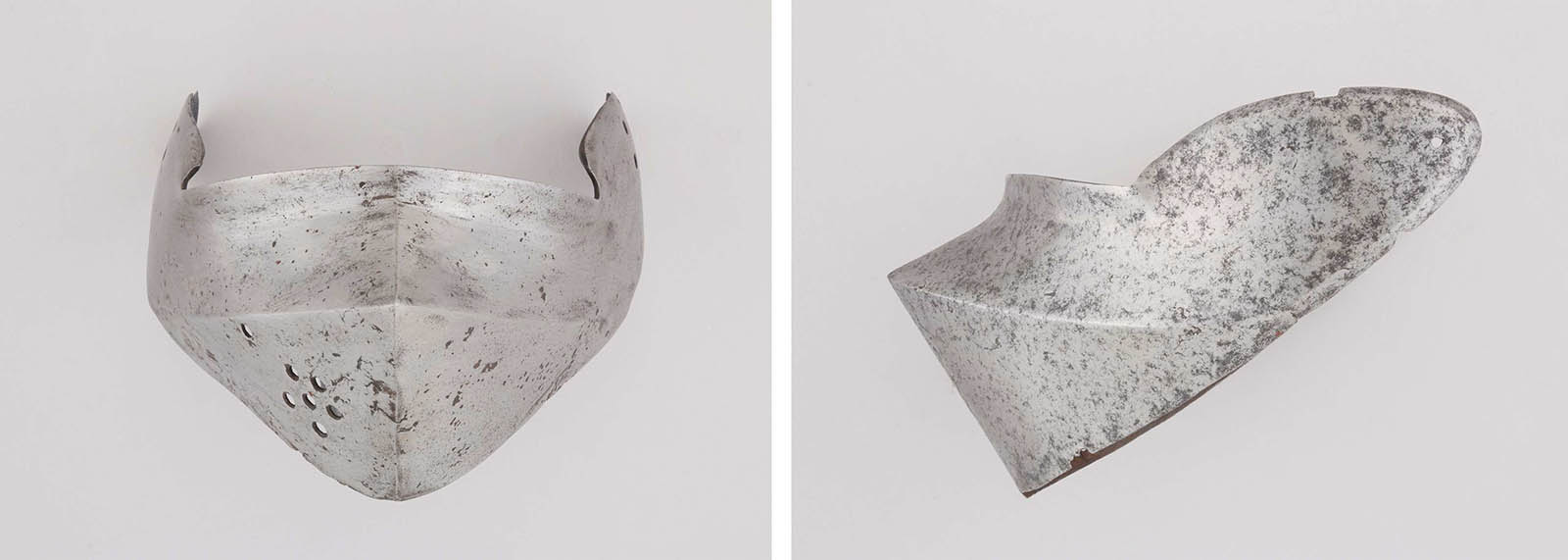
Visor for helmet armet. Italy, 1475 year.
Roundish visor or so-called “Sparrow beak” protected face of a knight. Visor was usually riveted to the dome. Some models of helmets had removable visor.
Despite of some grotesqueness, Italian armour was true to its sault during more than a century. It gained a reputation of amazing and reliable armour in numerous battles and tournaments, approving in practice, that simplicity is an extreme range of proficiency and last effort of artisan.
Here you can see more different types of full-armor made by Steel Mastery.


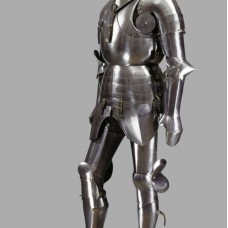
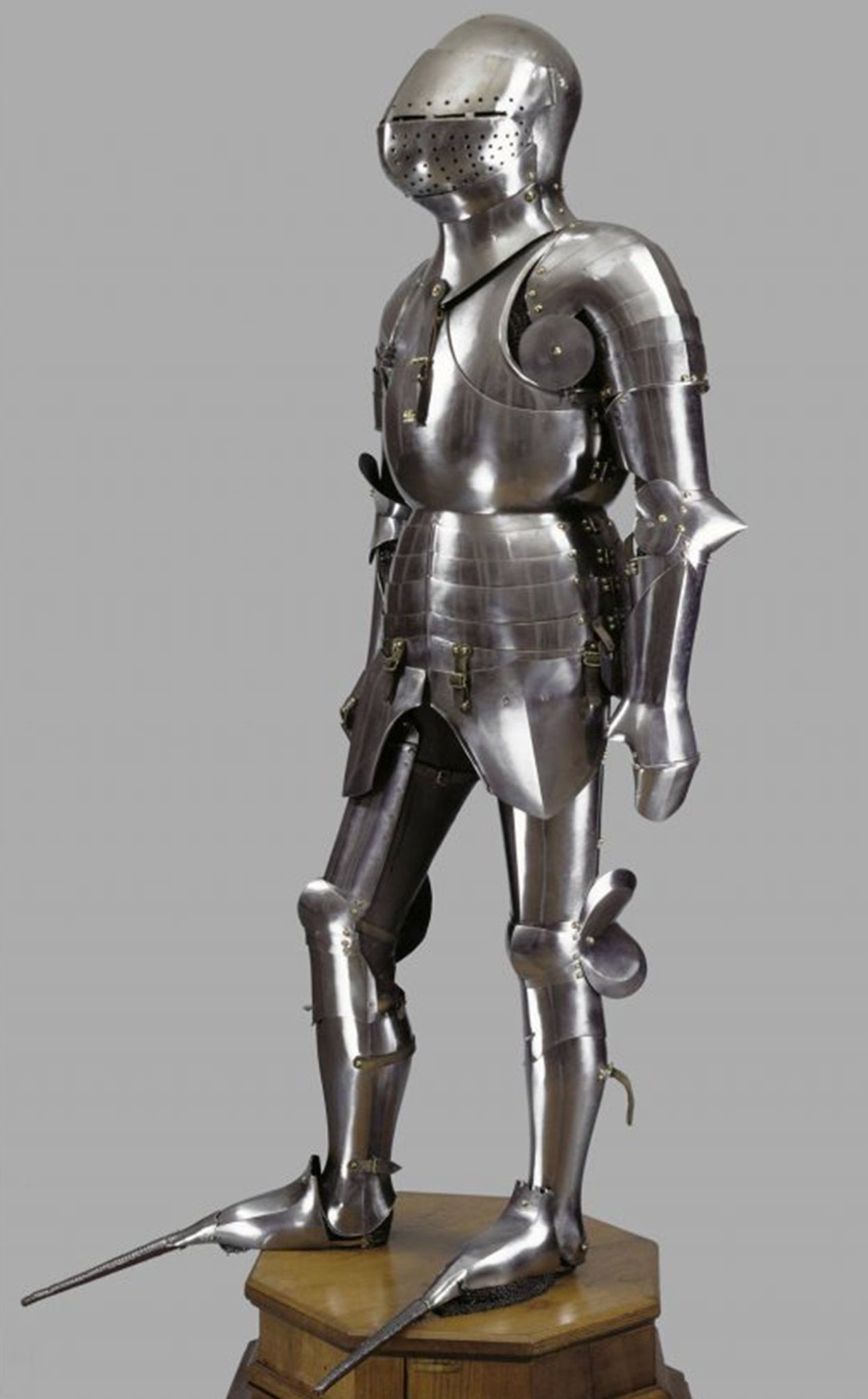
0 Comments
Steel-mastery.com